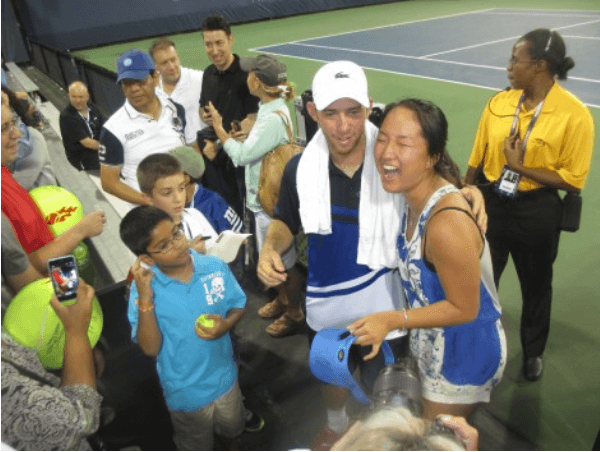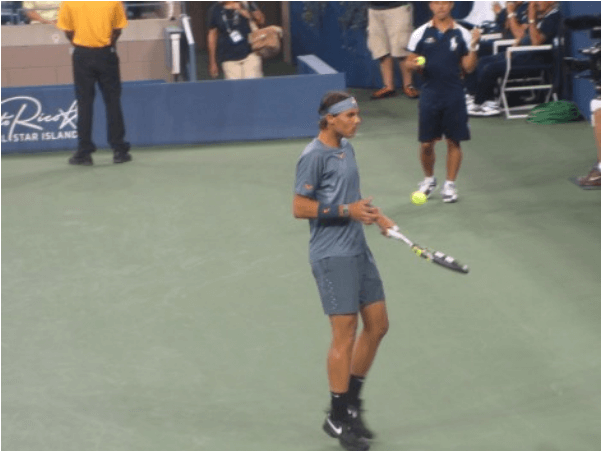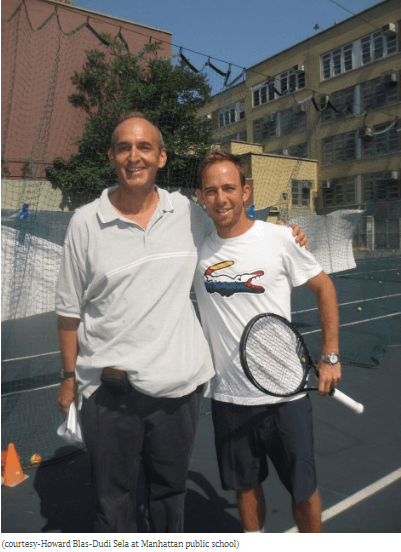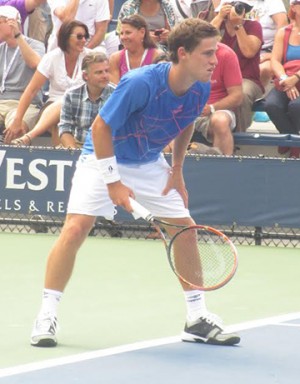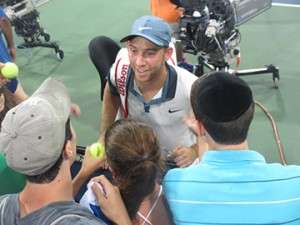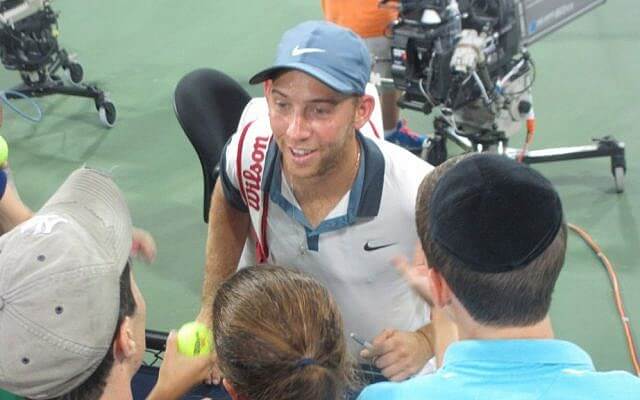Original Article Published at The Jerusalem Post
Dudi Sela, the only Israeli player in the main draw, was practicing at the US Open on Friday with hitting partner, American Sam Querrey, ranked No. 32 in the world.
When the US Open draw ceremony took place Friday morning at the USTA Billie Jean King National Tennis Center in Flushing Meadows, New York, several coveted spots for the Grand Slam tennis event, which gets under way on Monday, were marked with the word “qualifier.”
The names of the men and women filling these 16 spots would not be known until the end of the day Friday. These 16 men and women are the lucky 32 players out of 256 who won three matches in last week’s US Open Qualifying Tournament to advance to the first round of the main draw.
The US Open Qualifying Tournament typically includes players ranked between 105 and 250 in the world.
Israeli tennis players Julia Glushko and Amir Weintraub won first-round matches last Tuesday.
Weintraub, ranked 209, defeated American Daniel Nguyen, but lost in the second round to ninth-seeded Radek Stepanek of the Czech Republic. Stepanek has competed in 14 previous US Open tournaments and reached the fourth round in 2009.
Glushko, ranked No. 148, needed just under two hours to defeat 500th ranked Miharu Imanishi of Japan, 6-4, 7-5 in her first-round match. She lost to American Jennifer Brady, the 18th seed in the qualifying tournament, 6-4, 6-0. Weintraub and Glushko’s matches took place late Thursday evening and were interrupted by rain.
Despite Weintraub and Glushko’s status as top-ranked Israeli players, they must often compete in qualifying events for entry in major tennis tournaments.
In an effort to obtain ranking points, Weintraub often elects to enter lower level Futures and Challenger Tour events.
Weintraub has been outspoken about the pleasures, stresses and financial challenges he faces on the professional tennis tour.
“I will cover a lot of miles, sleep in a lot of hotel rooms, eat in a lot of restaurants, and get to see a lot of amazing cities,” he said. “And when I have a few minutes of down time, I look forward to talking to friends and family on WhatsApp, catching up with a few of my favorite TV series on the computer, and taking videos of funny things from the tour.”
Glushko and Weintraub earned several thousand US dollars for advancing to the second round of the qualifiers.
Players reaching the first round of the main singles draw receive $43,313. Players reaching the round of 64 earn $77,118.
Tournament winners and runners up receive $3,500,000 and $1,750,000. Glushko and Weintraub have each earned slightly more than $50,000 to date in 2016.
Meanwhile, Noah Rubin, a 20-year-old Jewish Long Island native, reached the third round of the qualifiers before losing on Friday afternoon to Karen Khachanov of Russia, 6-3, 4-6, 6-4.
“It was tough, it was a roller coaster of a match. I had to fight,” Rubin told The Jerusalem Post in a post-match interview in the US Open Media Center.
“It was great to have people cheering for me and supporting me. I want to make them proud.”
Rubin, in his second year of professional tennis, reached a career-high ranking of 160 and returns to tennis after a two-anda- half month absence due to a foot injury. Rubin will soon travel to Asia for a few tournaments then return to the US for the indoor tournament season. He hopes to qualify for the Australian Open in January.
Rubin, who celebrated his bar mitzva with a tennis theme, is proud of his Judaism. His sister participated in a Birthright trip, and although he has not yet been to Israel he says he “want[s] to go very badly. I want to get out there. Maybe on Birthright, or for a tournament or on vacation – once things settle down in my career.”
Dudi Sela, the only Israeli player in the main draw, was practicing at the US Open on Friday with hitting partner, American Sam Querrey, ranked No. 32 in the world. They practiced in the prestigious Louis Armstrong Stadium.
Sela, ranked No. 80, will face Pablo Cuevas of Uruguay on Monday in his first-round match. Cuevas, ranked 20th in the world, is the 18th seed in the US Open. They also met in the first round in New York last year, with Cuevas winning in four sets. With play beginning at 11am EST, the Sela-Cuevas match is the third match of the day on Court 4.


